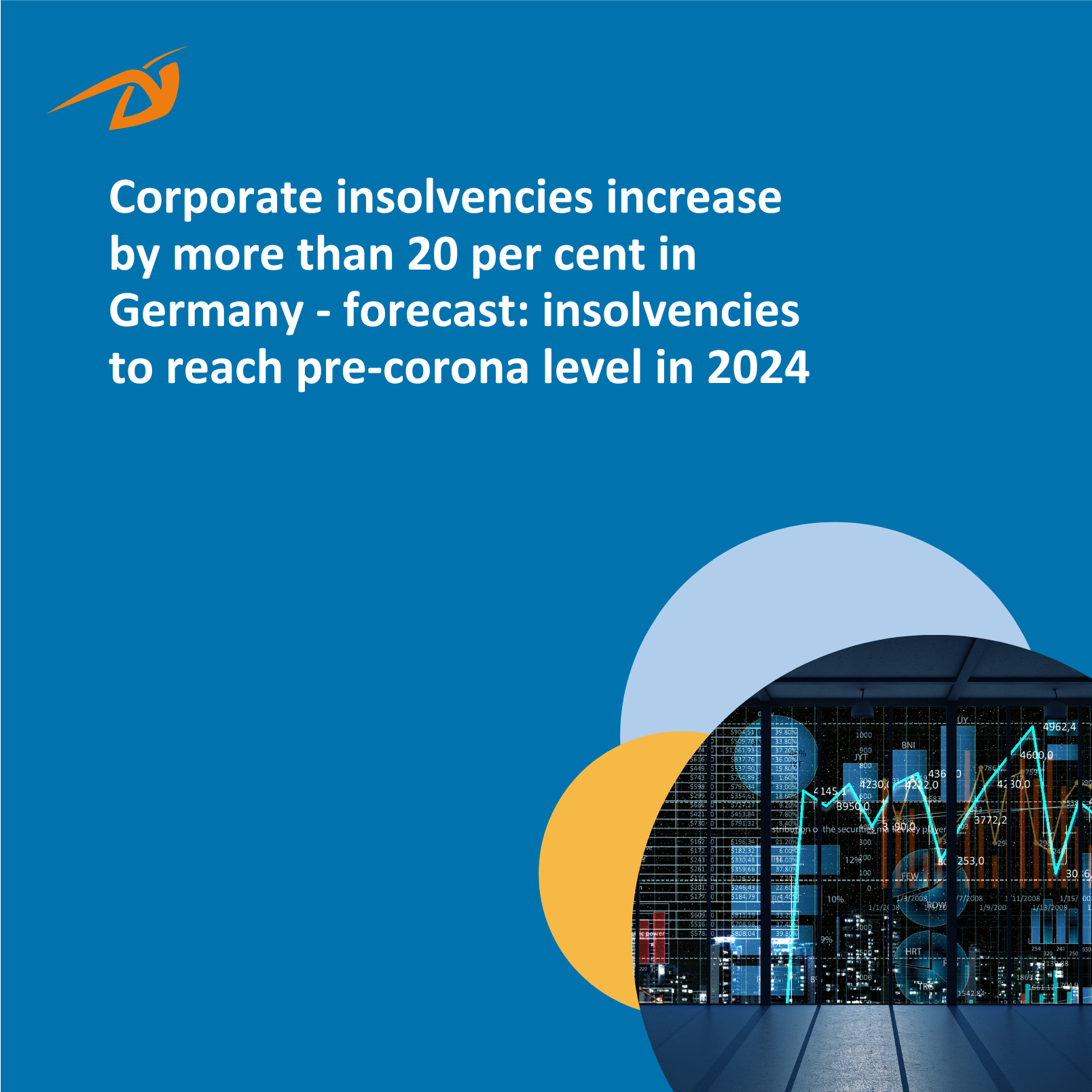-
COOPERATION BETWEEN CRIF AND THE MITTELSTANDSVERBUND - ZGV E.V.: FACILITATING SUSTAINABILITY REPORTING FOR SMES
Read MoreDER MITTELSTANDSVERBUND - ZGV e.V. and the information service provider CRIF announced a strategic partnership on 23 August that...
-
Corporate insolvencies increase by more than 20 per cent in Germany - forecast: insolvencies to reach pre-corona level in 2024
Read MoreLast year, 17,847 companies filed for insolvency in Germany. This represents a 22.4 per cent increase in company insolvencies...
-
CRIF and Anonos Join Forces to Deliver Responsible AI Solutions Through Privacy-Preserving Synthetic Data in the Age of Generative AI
Read MoreNew York City and Bologna, May 23, 2023 - CRIF and Anonos - an innovator in enterprise data privacy, security and enablement,...
-
Corporate insolvencies rise by 4.2 percent in Germany - moderate increase in corporate bankruptcies forecast for 2023
Read MoreDuring the last year, 14,578 companies filed for insolvency in Germany. This represents an increase of 4.2 percent in corporate...
Corporate insolvencies increase by more than 20 per cent in Germany - forecast: insolvencies to reach pre-corona level in 2024
Last year, 17,847 companies filed for insolvency in Germany. This represents a 22.4 per cent increase in company insolvencies compared to the same period in the previous year (2022: 14,578 company insolvencies). These are the key findings of the analysis of corporate insolvencies in 2023 by information service provider CRIF.
Despite the increase, it is not possible to speak of a "wave of insolvencies" in terms of the nationwide figures, even though double-digit year-on-year growth rates have been observed consistently since June 2023. From a regional perspective, the number of cases is sometimes rising at an alarming rate, for example in Bremen (up 53.9 per cent) and Schleswig-Holstein (up 34.2 per cent).
In Germany, it is more a case of a return to normality in the insolvency situation after extensive support programmes worth billions were implemented in recent years. The current figure is also low compared to previous years. The average since 1999 has been just under 26,200 company insolvencies per year, with the previous record year of 2003 being 39,320.
The forecast for 2024 as a whole is currently 19,800 corporate insolvencies, which corresponds to an increase of 11 per cent compared to 2023. This means that corporate insolvencies next year will almost reach the level of the years before the coronavirus pandemic (2017: 20,276; 2018: 19,552; 2019: 19,005).
"The year 2023 was characterised by numerous challenges for companies, including high energy costs, supply chain problems, geopolitical uncertainties, higher interest rates and persistent inflation. Consumers' reluctance to spend due to increased costs has also led to a reduction in their disposable income, which in turn has a negative impact on companies. The resulting loss of purchasing power is an additional burden on companies. The financial situation of many companies is also being negatively impacted by increased production costs, higher personnel expenses and high interest rates. All in all, the existence of not just one, but several parallel crises is leading to greater financial instability for companies. The majority of companies are still in a good financial position, even if an increasing number of major insolvencies may lead to further insolvencies. In some cases, domino effects will ensure that insolvent companies will drag other companies into insolvency with them," says CRIF Germany Managing Director Dr Frank Schlein.
Bremen with the highest insolvency rate
The highest insolvency density in 2023 was in Bremen with 113 insolvencies per 10,000 companies. The national average was 59 insolvencies per 10,000 companies. In addition to Bremen, Berlin (100 insolvencies per 10,000 companies), Hamburg (78), North Rhine-Westphalia (76), Saarland (70), Schleswig-Holstein (64) and Hesse (60) also ranked above this figure. The fewest company bankruptcies in 2023 were in Thuringia (38 insolvencies per 10,000 companies), Brandenburg (41), Bavaria (44) and Baden-Württemberg (45).
In absolute terms, the federal states of North Rhine-Westphalia (4,639), Bavaria (2,492) and Baden-Württemberg (1,862) reported the most company insolvencies.
Strongest increase in Bremen and Schleswig-Holstein
In all 16 federal states, the insolvency figures have risen compared to the previous year - most strongly in Bremen with an increase of 53.9 per cent. Schleswig-Holstein (up 34.2 per cent), Berlin (up 31.2 per cent), Saarland (up 29.1 per cent) and Mecklenburg-Western Pomerania (up 28.1 per cent) also saw significantly more corporate insolvencies. The increase in company insolvencies was lower than the national average (plus 22.4 per cent), particularly in Brandenburg (plus 1.1 per cent), Thuringia (plus 6.3 per cent) and Saxony-Anhalt (plus 10.6 per cent).
Strong growth in the care facilities, call centres, gastronomy, fitness studios and private security services sectors
The manufacturing industry was particularly hard hit by insolvency, with an increase of 29.2 per cent, followed by trade with a rise of 26.2 per cent. An increase of 20.9 per cent was recorded in the construction industry. The service sector recorded an increase of 22.9 per cent compared to the previous year.
A closer look at the various sectors shows that the following industries in particular were affected by insolvencies in terms of percentage growth: Care facilities, call centres, catering, fitness studios and private security services. In contrast, the shipping, law firms excluding notaries, legal advice, electricity and energy supply sectors recorded significantly fewer insolvencies compared to the previous year.




